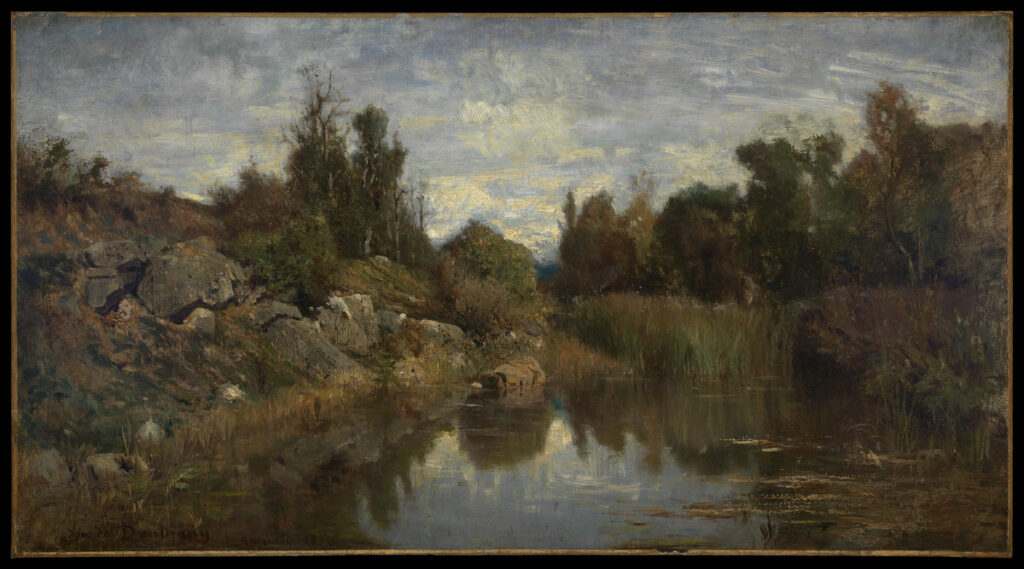On View
Daubigny, Charles François
French (1817-1878)
Place made: Europe; France; Rhone; Isere; Optevoz
The Water’s Edge, Optevoz, ca. 1856
Frame: 32 7/8 in x 54 3/4 in x 2 in; 83.5 cm x 139.1 cm x 5.1 cm; Stretcher: 26 1/4 in x 48 1/4 in; 66.7 cm x 122.6 cm
Gift of anonymous donor in memory of Mildred and Robert Warren
MH 1981.8

 GIVE
GIVE